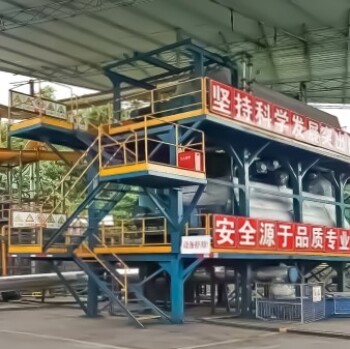When it comes to converting waste materials into energy, gasification and pyrolysis are two methods that stand out. Both are preferable to combustion for several reasons.
5 Key Differences Explained

1. Energy Efficiency
Both gasification and pyrolysis processes have higher energy efficiency compared to combustion. This is because they release heat while also producing valuable by-products such as bio-oil, bio-char, and syngas.
These by-products can be used for various purposes, such as transportation fuels, soil amendment, and activated carbon production. In contrast, combustion only releases heat and does not produce any valuable by-products.
2. Pollutant Emissions
Gasification and pyrolysis processes produce fewer pollutants compared to combustion. Combustion often releases pollutants such as dioxins, furans, and particulate matter, which are associated with burning waste in the presence of oxygen.
On the other hand, gasification and pyrolysis produce cleaner gases and have lower emissions of pollutants. This makes them more environmentally friendly options.
3. By-Product Production
Pyrolysis of biomass produces bio-oil, bio-char, and syngas. Bio-oil can be used as a transportation fuel, while bio-char can be used as a soil amendment. Syngas can be further processed and used for various applications, such as electricity generation or as a feedstock for chemical synthesis.
These by-products have economic value and can contribute to the overall sustainability of the process.
4. Feedstock Versatility
Pyrolysis can process a wide range of feedstock, including waste plastics, tires, and biomass. This versatility allows for the utilization of various waste materials, reducing the environmental impact of these materials and promoting a circular economy.
5. Oxygen Presence
The major difference between gasification and pyrolysis of biomass is the presence of oxygen. In pyrolysis, biomass is heated in the absence of oxygen, resulting in the production of bio-oil, bio-char, and syngas.
Gasification, on the other hand, involves heating biomass in the presence of limited oxygen, leading to the production of combustible gases, such as syngas.
Continue Exploring, Consult Our Experts
Looking for environmentally friendly solutions for waste management and energy production? Look no further than KINTEK! Our cutting-edge pyrolysis and gasification equipment offers higher energy efficiency, valuable by-products, and reduced carbon footprint.
Say goodbye to wasteful combustion processes and hello to sustainable alternatives. Contact us today to learn more about our innovative solutions and how they can benefit your business and the environment.










